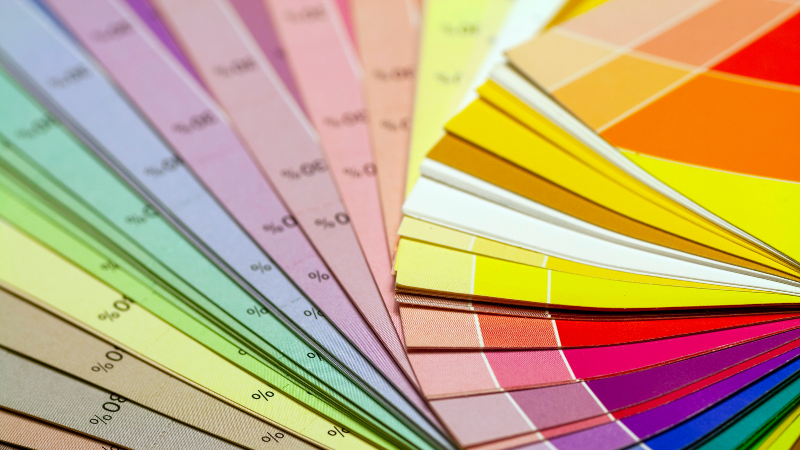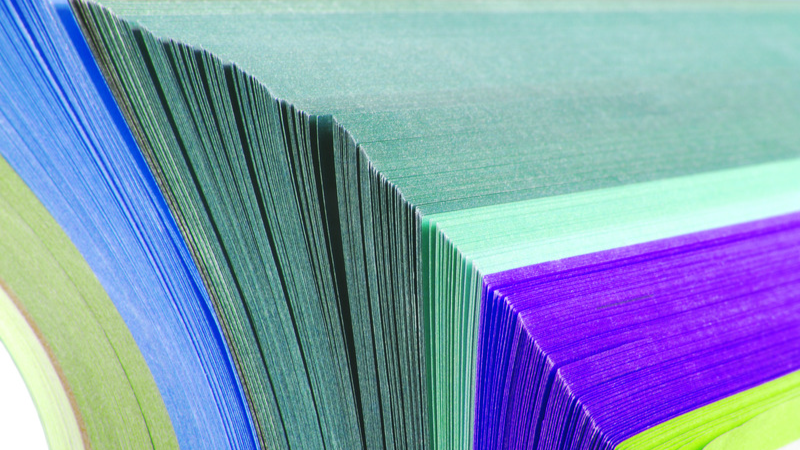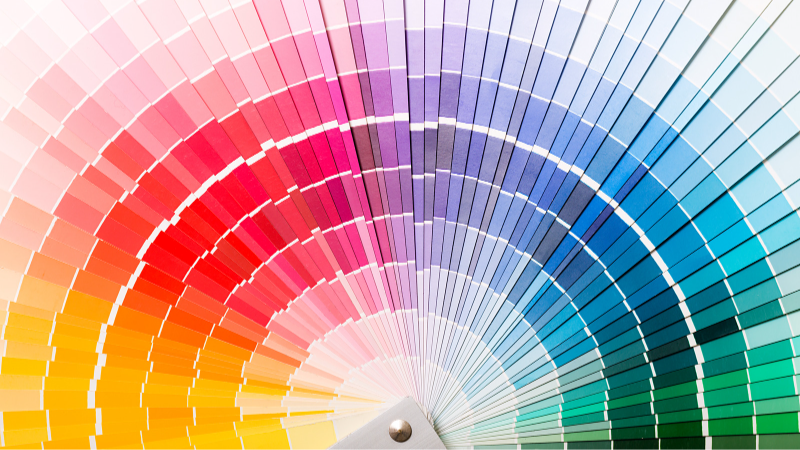Last Updated on May 30, 2023 by Packoi Team
When designed properly, product catalogs are powerful enough to increase your sales. If you follow the right rules, you can turn it into a selling machine that’ll convince more people to buy your products – repeatedly.
This article will focus on designing a print product catalog that’ll make your sales soar month-on-month.
2 Types of Product Catalogs

In the past, we only had one: print catalogs. It may be hard to imagine right now but there used to be a time when we didn’t have the Internet. That means businesses only operated in brick-and-mortar establishments.
These businesses used a product catalog to inform their customers of current collections. Sometimes, they also release catalogs as a teaser for upcoming collections.
But that’s no longer a monopoly.
With the explosion of online businesses and eCommerce stores, a new kind of product catalog emerged: the digital one. It’s an online version that allows customers to browse products through their desktop or mobile devices.
Let’s go deeper into what print and online product catalogs can offer.
Print Catalogs
This is like a printed document or booklet of products that your customers can physically browse. They usually get it from catalog stands in high-traffic areas like retail stores, malls, offices, hospitals, and clinics.
Put your product catalog where your target market usually goes to.
Another place to put your printed product catalog is in waiting areas. When people are bored, they usually like to read something. Even in the age where mobile devices are attached to our hands, some people prefer to read the old-school way.
Having your print catalog nearby will increase the chances of it being read by people you know who want to buy from you.
A print catalog is effective when it’s well-organized. You need to put a table of contents so people have the option to go directly to the products they’re interested in.
Make sure this catalog contains all the relevant information that’ll help people make a buying decision. That includes the product name, price, description, ingredients/materials, etc.
Digital Catalogs
An online product catalog has the same purpose as a printed catalog. It seeks to inform online shoppers of products that they can buy.
Ideally, an online catalog is used by eCommerce sites – like a Shopify store or a social media page. It’s to help shoppers find the products they want to buy online.
However, online catalogs aren’t just for online shopping. Sometimes, businesses with brick-and-mortar stores upload their product catalog online so customers can browse ahead and do their research. After looking at the online product catalog, the customer will know what they want to buy. They immediately know what they’ll get when they get to the store.
What’s great about a digital catalog is it can be conveniently carried everywhere. You also have the option to make it downloadable. It can be posted online through their website or various sales channels. Or it can be added as a link on online posts, videos, and emails.
3 Reasons to Use Print Product Catalogs over Online Catalogs

As we get more technologically advanced, it seems like using online catalogs is a way for businesses to modernize their marketing operations.
While using an online product catalog has its merits, there are times when using the printed version is better.
If you position your print catalogs properly, it can help generate more sales. The design of the product catalogs can encourage browsing from the front to the back cover. That can easily increase your sales and revenue.
Now, this isn’t meant to degrade digital catalogs. There are times when it’s the only option – specifically for eCommerce sites. But if given the option, don’t completely modernize your product catalogs. There’s still some benefit to keeping the traditional printed version of your product catalog.
Here are 3 reasons why print catalogs still reign supreme in the world of marketing.
24/7 Brand Exposure
You can indeed carry an online product catalog with you anywhere. You can post it on several sales channels. If it’s downloadable, you don’t even need an online connection.
But here’s the thing. Can you remember everything that you have on your mobile device? It’s doubtful that you do. That means digital catalogs can be forgotten.
Printed product catalogs have a better chance at giving you brand exposure – 24/7. If you position it in high-traffic areas, more people will see it. If you put it in the waiting area of airports, hospitals and clinics, and business establishments, people who see it will be encouraged to browse it.
With the right catalog design, it can attract the attention of people passing by. There’s a higher chance that people will pick it up.
That’s the type of exposure that your business will have if you use a print product catalog.
Convenience
It’s easier to carry a digital catalog but it’s more convenient to browse a physical one. Holding it in your hand and flipping through the pages allows you to look at every product category for as long as you like.
When you look at an online product catalog, you need a strong Internet connection. Otherwise, some of the images might not load. If you want to go back or jump forward to some products, you will still have to wait for the page to load. That’s one of the drawbacks of a digital catalog. You can’t always download if your mobile device memory is limited.
With a printed catalog, browsing is easier. You flip through the pages to go to the product that you want to peruse. You can use the table of contents to see products of interest.
If you’re not tech-savvy, browsing products traditionally is more convenient.
Easier to Read
The thing about browsing an online product catalog is it makes you impatient. The loading time is already eating up your precious time. This makes online shoppers short of time. They only have just a few seconds to browse.
This compromises their ability to read through the whole product data that you’ve provided.
With a product catalog, it’s easier to get lost in the pages. If you choose the right product catalog template, you can position the information so it encourages the reader to turn the page and read to the back cover.
In case they want to go back, there’s no need to wait for the loading time. They can flip through the pages to go back and forth between products. They can compare and see the images immediately as they try to decide on what to buy.
3 Design Elements of a Successful Product Catalog

Whether you’re creating printed or digital catalogs, you need to remember specific catalog design elements to make them successful. You need to have the right layout, complete product information, and impressive images.
All these elements are a must in every product catalog template. You have to remember, your catalog is meant to convince customers to buy. The layout, data, and images will work together to make that happen.
Here’s a deeper look at the 3 elements and their roles in convincing the customer to buy from your product catalog.
The Layout
The product catalog layout is the key to making your customers read from cover to cover. It’s the positioning of the headlines, product information, and images.
Through the layout, you can dictate how the customers will feed the information on the catalog.
Ensure that the product catalog template you’ll use will highlight the right elements. When the customer turns the page, what do you want them to focus on first?
It could be the headline, the images, or the product name. Whatever that is, make sure it’s positioned where the eyes usually land first – which according to research is in the top-left corner.
Once their eyes land on that, where do you want their eyes to focus next? Study shows that it’s usually a Z pattern if there’s light text and an F pattern if it’s more text-heavy.
This takes a bit of technical knowledge about design elements like color, font, sizing, and even white spaces. Once you familiarize yourself with that, it should be easier to plan your catalog.
The same rules are followed for a product catalog online.
The bottom line is, to make sure the layout makes the product content easier to comprehend.
The Images

Product images are meant to capture the attention of the customers. You want them to be interested enough in what they see so they’ll try to know more about it.
The images are usually the first thing that customers will look at in a catalog. So if there’s a specific product that you want your customers to buy, make sure you position it wherever the customer eye’s will land first – the top-left corner.
Use high-quality product images that’ll highlight the color and shape of the product. The idea is to make them like what they see so they’ll look for the product data.
The same is true for a digital catalog. But this time, use images that the customer can zoom in and out. That way. They can take a closer look.
The Data
The product data is responsible for helping the customers make a purchasing decision. It’s not just about the pricing details.
People want to know if the price they’re paying is worth it. This is why you must be transparent with the details you’ll provide in the product catalog.
Be truthful with the way you describe the product. Provide the ingredients or materials that you used to create the product, especially for cosmetics and food products.
If you give all the important details, the customer can decide if it’s safe for them to buy the product. This will also protect you from any problems in the future. If you fail to declare important information and it turns out to be harmful to a person, you’ll get in trouble.
So it’s best to be truthful about your product information. Even with digital product catalogs, you have to provide relevant information.
4 Rules to Increase Sales Through a Product Catalog

How can you design your product catalog so it can encourage your target market to buy? How can you make it versatile enough so it can be applied even to the online product catalog version on different sales channels?
It’s not as difficult as you think. You have to follow specific rules to make the design highly effective as a selling machine.
Here are 4 important rules that you may want to check out.
Rule 1: Start with an Impressive Cover
The cover of your product catalog is very important because it’s the first thing that your customers will see.
If it’s impressive, it’s more likely to make your customers stop to take a look at what’s inside. This is why you have to choose the image you’ll put on the cover to get more sales.
That doesn’t always mean you have to get a professional catalog done by a graphic designer. If you have the budget for it, that’s okay. But if not, this is something that you can do on your own.
The key to creating a remarkable product catalog cover is to make it reflect your brand identity. Make your brand name, logo, and other elements associated with it visible. While the product is the focal point, you want customers to be able to identify your branding on it.
Another thing that you have to do is to choose the best photo of the product that you want to highlight. It shouldn’t be a product shot. Make it look like a life aspiration.
So if you sell watches and your target market is businessmen, choose a photo of a model wearing a suit that exudes power and success. Of course, make the watch prominent in the whole ensemble.
Or if it’s a home decor product catalog, choose a photo that depicts a happy family in the living room.
The goal is to show the customer what they want to happen. Make them feel that they can only achieve it if they buy your products.
Rule 2: Choose a Visually Appealing Page Layout

When you’ve succeeded in making the customer pick up your product catalogs, it’s time to impress them with the inside.
First of all, make sure that it has a table of contents. Some customers want to see what’s inside the catalog immediately.
Choose a product catalog template that’ll make them browse everything. Make it a professional-looking catalog.
Remember some of the rules mentioned earlier in this article.
Put the most interesting photos in the top-left corner. That way, they’ll see the best products as soon as they turn the page.
You should also ensure that the product information is near the photos. That way, if a reader becomes intrigued with a particular product photo, they can easily find the information about it. Make sure you don’t give too much information. Choose only the ones you know will help readers with purchasing decisions.
It’s usually better to create a different catalog for every product category. But if it’s not possible, you can have different layouts for every product category. Don’t make them too different, though. Maybe change the color a bit or the position of the product information. That way, the customers will know that they are browsing a different category already.
Rule 3: Use Captivating Fonts, Colors, and Headlines
It’s not just the product images that can be eye-catching in your catalog. You can also use font, colors, and headlines to make your product catalog visually appealing.
If you’re familiar with the typography concept, you’ll know that fonts represent certain characteristics and traits. For instance, Script fonts like Lucida Handwriting and Edwardian Script are perceived to be stylish, elegant, and classic. Serif fonts like Courier New and Times New Roman are more traditional and formal. Sans serif fonts like Verdana, Helvetica, and Calibri are neutral and modern.
Color psychology should come into play when you’re choosing your product catalog template. Make your color choices evoke the right feeling. That doesn’t just mean making the readers happy enough to buy your product. It’s more about evoking emotions that’ll make them relate to your brand. That’s how you use color in a catalog to help sell more.
Finally, the headlines play an important role in separating the different product categories in your catalog. Use it to tell customers what products they’ll see in that part. Now, with headlines, you don’t just want to use the right font. You want to use the right words to make it catchy. It doesn’t have to be too long. But it must capture the essence of the products you’re showing next.
If you choose the right elements for your product catalog, you can keep the attention of the readers until they find the product they want to buy from you.
Rule 4: Provide Valuable Product Information and Exceptional Images

Product catalogs are meant to provide information about what you offer. That means product data should be considered carefully.
This doesn’t mean you have to provide all sorts of information about your products. Having a lot of text on your catalog may be a huge turnoff and make your customers stop reading.
Don’t overload readers with information. Only provide relevant information that you know will help customers make a buying decision.
Among the data that you should include are the product name, description, variants or color availability, ingredients or materials (if the industry regulations require it), and of course, the price. The price should be visible because that’s usually the first thing that people want to see.
If you think the customer needs to know more about the product, give them a link to your website where they can know more about it.
Choose a font that’ll make the information easy to read and choose colors that’ll make it stand out against the background.
While the product data will help customers decide what they’ll buy from you, the images will capture their interest first. If they’re impressed with the images, they’ll want to read more about the product.
This is they getting the right photo is very important. You can use your own product photo if you don’t have a budget for a professional photographer. But make sure you know how to capture the appeal of your product so it shines through in your product catalog. You can read the article “Tips for Your Next Catalog Printing Project” before for catalog printing tips.
Are You Ready to Design a Product Catalog that’ll Increase Your Sales? Packoi Printing Can Help with the Product Catalog Design.
You don’t have to feel intimidated by all the details when designing a product catalog. The key is to focus on your brand and your customer’s preferences. Those two will give you an idea of what you should put in your product catalog so it can help you sell more.
While designing a product catalog is something that you can do, hiring a professional to help has its merits.
We at Packoi Printing offer designing services to help you create the best product catalog for your business.
Give us a call so we can discuss our printing costs. We’ll get back to you with a fair quotation in no time.




